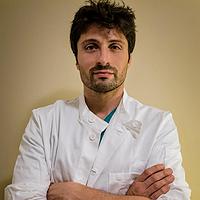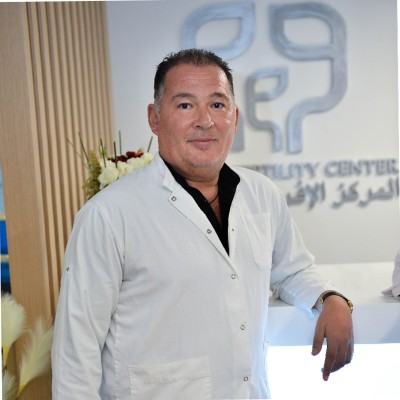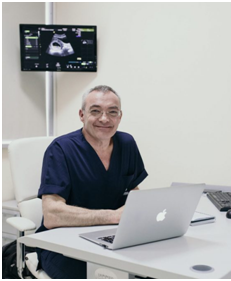
Title: Gestational diabetes and breastfeeding
Invited Talk
Dr. Miljana Z Jovandaric
University Clinical Center of Serbia, Belgrade
Abstract
Gestational diabetes mellitus (GDM) is a pregnancy complication, in which women without previously diagnosed diabetes develop chronic hyperglycemia during gestation.
Diet and lifestyle of mother during pregnancy as well as lactation have long-term effect on child’s health and development. Detection of early risk markers of adult age chronic diseases which begin during prenatal life and appliance of complex nutritional interventions at the right time may reduce the risk of these diseases
Biography
Miljana Z. Jovandaric was born in Serbia. She graduated at the Faculty of Medicine, University of Belgrade. Pediatric specialization ended in 1999 in the University Children's Hospital, Belgrade. She completed her specialization in neonatology in 2003. Master's thesis `` Analysis of lipid infants in women suffering from gestational diabetes mellitus (GDM)``, she defended in 2006 and doctoral dissertation `` Effect of hypoxia on electrolyte and lipid levels in term newborns``, 2018, in the School of Medicine, University of Belgrade, Serbia. Research associate since 2020 at the School of Medicine, University of Belgrade, Serbia. Author and co-author of 84 scientific papers presented at national, international conferences and journals. Head of the Department of Sick Newborns at the Clinic for Gynecology and Obstetrics, Department of Neonatology, University Clinical Center of Serbia, Belgrade.

Title: Implementation of ERAS in gynecological surgery
Invited Talk
Dr. Federico Ferrari
Spedali Civili of Brescia, Italy
Abstract
Background
The enhanced recovery after surgery (ERAS) concept is based on a multimodal approach to improve the functional rehabilitation after surgery.
Objective
This study aimed to validate an ERAS protocol in gynecologic surgery and to measure the adherence to the protocol items
Methods
We conducted a prospective randomized trial enrolling consecutive patients from a single institution affected by benign of malignant gynecological diseases (endometrial cancer and advanced ovarian cancer, excluding cervical cancer). We randomly assigned patients to undergo standard perioperative care or ERAS Main outcome. The primary outcome is a shorter length of stay in favor of ERAS. Secondary outcomes include measurement of adherence to the protocol items: comparison of postoperative pain, vomiting, and nausea; anesthesiologic and surgical complications up to 30 days after surgery; rate of readmissions; the time to event in hours for bowel movements, flatus, drinking, hunger, eating, and walking; and the quality of recovery using a validated questionnaire (QoR-15). Finally, we explored the length of stay (LOS) in the prespecified subgroups at randomization, based on the type of surgical access and gynecologic disease.
Results
A total of 168 women were available for analysis: 85 women (50.6%) were assigned to the standard group, and 83 women (49.4%) were assigned to ERAS, and the groups were similar for baseline characteristics. Seventy-two patients (42.9%) underwent surgery for benign disease, 48 (28.6%) for endometrial cancer, and 48 (28.6%) for ovarian cancer. Women enrolled in ERAS had a shorter LOS (median: 2 [interquartile range, 2-3] vs 4 [interquartile range, 4-7] days; P<.001). A decreased rate of postoperative complications was noted for ERAS, as well as an earlier time to occur for all the events. Mean adherence to protocol items was 84.8% (95% confidence interval, 79.7-89.8), and we registered a better satisfaction in ERAS group. The shortening of the LOS was confirmed also in the prespecified subgroup analysis.
Conclusion: Application of ERAS in gynecologic surgery translated to a shorter LOS regardless of surgical access and type of gynecologic disease. Adherence to protocol items in the setting of a randomized trial was high.
Biography
Dr. Federico Ferrari attained his Medical degree in 2009 from the University of Brescia (Italy) and he is a specialist in Obstetrics and Gynecology from 2015. He moved to England at the University of Oxford for a Clinical Fellowship in Gynecologic Oncology and back to Italy he received his PhD degree in Biomedical sciences and translational medicine from the University of Brescia. His research interests cover various themes of gynecologic oncology with specific interest in the field of surgical management, minimally invasive procedures and clinical-translational setting in the prevention, diagnosis and treatment of female cancers. Actually, he works as consultant of Obstetrics and Gynecology and at the Department of Obstetrics and Gynecology at Spedali Civili of Brescia, a tertiary northeastern teaching hospital in Italy. He is author of articles published in international peer-review journals, he usually serves as referee and as editor for indexed peer-review journals.

Title: Robotic Insights and Innovations in Obstetrics and Gynecology: Progressing to the Future
Invited Talk
Prof. Mandy Mangler
Vivantes Auguste Viktoria Klinikum, Germany
Abstract
Robot-assistedtechniquesand computer-assistedtechniques, are part ofmodern medicine. Innovative diagnostic and therapeuticstrategies involve them.Health care workers are confronted with an increasingwork volume and shortage of qualified staff which can be handled way betterifdigitaltools are usedassupportingstrategies. Thisinvolvesholisticdigitalapproachesthataddresshealth care work in allcasesthat do notnecessarilyhave to beendone by human beings. Resourcesthatcannot be replaced by human beings include interpersonalrelationshipssuchas human communication and touch or bedding.
Biography

Title: Fertility and vaginismus
Invited Talk
Prof. ACHOUR Radhouane
Faculty of medicine of Tunis-Tunisia
Abstract
The literature have described the desire of women suffering of Vaginismus to become pregnant as the primary reason to seek medical care. However; Only 19% of women with sexual disorders would consult their gynecologist for this reason. Vaginismus is a rare condition, which may affect up to 1% of the female population and which is characterized by involuntary contraction of perineal muscles resulting in an impossibility of penetration during sexual intercourse. Objective In this work, we are going to study the socia-demographic profile of these women/ patients. The sexual life of the woman before conception, the desire of pregnancy (spontaneous or induced), circumstances of its incidence as well as delivery and its complications.
Methods - Patient(s) It is a prospective study about 20 pregnant patients diagnosed with vaginism carried out in the emergency department at the Neonatology and Maternity centre of Tunis (CMNT) from october 2016 to March 2017. Main Outcome Measure(s) Vaginismus may result in infertility and may affect a woman’s perception about her femininity and her potential of motherhood. Despite their condition, women with vaginismus show an increasing desire for having children and despite the difficulties they have to encounter due to their condition, they aim to become pregnant (by assisted or spontaneous methode). Many authors have described the syringe method (carotid insemination). However, medical assistance from reproduction secondary to female subfertility was the method of having a pregnancy of a high number of women having a vaginismus. Result(s) The average age was 25.6 years. Vaginism was classified as primary in 75% of cases.. All the women studied (100%) reported the notion of pain during the first sexual intercourse. Sexual intercourse is incomplete in 90% of cases. The repercussion on the couple was represented essentially by: a perturbation of the couple's relational life. 65% of the patients had a spontaneous pregnancy due to incomplete sex, ejaculation at the entrance of the vagina without penetration. Vaginismus was an indication to caesarean section in 15 cases (75%). Conclusions Vaginismus, a sexual dysfunction preventing any vaginal penetration, a priori, a symptom incompatible with a pregnancy. However, there are virgin vaginal women and pregnant, in great physical and mental suffering.
Biography
ACHOUR Radhouane is associate professor at faculty of medicine of Tunis-Tunisia; He has published many basic and clinical articles, his research interests include gynecology obstetrics pathology and sexology behavior. He has published more than 40 scientific articles including the most recent: * Vaginismus and pregnancy: epidemiological profile and management difficulties. Psychology Research and Behavior Management 2019. He also served as member of the editorial team for for indexed peer-review journals and Reviewer in renowned international journals such as: * BMC Pregnancy and Childbirth * Journal of Sexual Medicine

Title:
Invited Talk
Dr. Feras Alkharouf
King Abdulaziz Medical City, Saudi Arabia
Abstract
Objectives:The objective of this study was to evaluate the trends in the incidence of women affected by OASI over a 10 year period comparing spontaneous vaginal delivery (SVD) and operative vaginal delivery(OVD) stratified by parity and mode of delivery. Furthermore this study aims to evaluate the temporal effect of education in the detection and management of obstetric anal injuries (OASIS), as evidence in practice became available over time.
Methodology:All women who underwent a vaginal delivery over a 10 year period (2009- 2018) at the Rotunda Hospital were reviewed retrospectively. The overall incidence of OASIwas calculated and compared to incidence ratesstratified by parity and type of vaginal birth to determine trends over time.
Main results: Vaginal delivery occurred in 59,187 women.24,580 (42%) were primiparous and 34607 (58%) were multiparous. The overall incidence of OASI was 2.9%. The incidence in OVD was 5.5% and the incidence in SVD 2%.There was a significant reduction over the 10 years in primips who had an OVD but no reduction in the other groups.
Conclusion: This study found that the overall incidence of OASI was 2.9%. Further education is required to assist with reduction in OASI particularly in the SVD group.
Biography

Title: New Innovations in Minimally Invasive GYN Surgery
Invited Talk
Dr. Ramon E Yera
Yera Care for Women, USA
Abstract
Biography
Dr. Yera is Cuban born but did his training in the United States. While a partner at Kaiser Permanente, he was instrumental in developing the minimally invasive gynecological surgery program there and has performed over 3000 laparoscopic procedures. Dr. Yera is one of the leading surgeons in his field who has trained over 350 surgeons around the country in laparoscopic hysterectomy. He has presented in National Meetings and frequently gives Grand Rounds at different teaching institutions. Dr. Yera currently travels around the country proctoring Laparoscopic Hysterectomy, Laparoscopic Sacrocolpopexy as well as advanced laparoscopic procedures. Areas of Expertise: - Laparoscopic Sacrocolpopexy - Laparoscopic Hesterectomy - Laparoscopic Myomectomy and Cystectomy - Endometriosis Surgery

Title: Adjuvant treatment for poor responders :daoes somethong really works ?
Invited Talk
Dr. Omar Sefrioui
Anfa Fertility Center, Morocco
Abstract
The cornerstone of a successful ART (artificial reproductive technique) programme is the multi-follicular development. In the current era, with an ever-increasing incidence of dwindling ovarian reserve in patients, it is a common challenge encountered by the treating specialists.
A poor response is defined as failure to develop a sufficient number of mature follicles to proceed to oocyte retrieval or yielding only a few oocytes following ovarian stimulation.
The diagnostic criteria of the poor ovarian responders have been changing over the years in 2011 being the Bologna Criteria and the latest being the new POSEIDON (Patient-Oriented Strategies Encompassing Individualized Oocyte Number) classification. The patients were divided into four categories based on quantitative and qualitative parameters − age, the antral follicle count and/or AMH and the ovarian response − if any previous stimulation performed.
Various therapeutic modalities have been proposed for the management of diminished ovarian reserve, with varying efficacies. In this writing, we provide you with a comprehensive overview of the modalities, their therapeutic response.
In the review presented by Cochrane, in the year 2010, it was very clearly stated that there was no specific therapeutic agent that offered an outright benefit in management of poor ovarian responders.
In the current era, there is an ever increasing incidence of poor ovarian response. Many strategies have been studied and hypothesized for the management.
Androgens have been widely used and studies in the management of Poor ovarian response. The two prime androgens used in poor ovarian response are Dehydroepiandrosterone [DHEA], Androstenadione and testosterone.
Use of Growth hormone, recombinant luteinizing Hormone and vasoactive substances have been analyzed based on the current evidence.
Biography

Title: Obesity and breast cancer: a multipartite connection
Invited Talk
Prof. Dipali Sharma
Johns Hopkins University School of Medicine, USA
Abstract
The prevalence of overweight and obesity has dramatically increased in the last two decades in the United States and many other countries. Notably, obesity is second only to tobacco as a leading risk factor for cancer and nearly 30 percent of cancers are attributable to obesity. An additional player has been identified as a key member of the obesity-molecular network that influences several components of microenvironment as well as growth and metastatic characteristics of breast cancer cells: the adipokine, leptin. High plasma levels of leptin, a major dipocytokine produced by adipocytes, are correlated with increased fat mass in obese state. Leptin is emerging as a key candidate molecule linking obesity with breast cancer. Acting via endocrine, paracrine, and autocrine manner, leptin impacts various stages of breast tumorigenesis from initiation and primary tumor growth to metastatic progression. Leptin also modulates the tumor microenvironment mainly through supporting migration of endothelial cells, neo-angiogenesis and sustaining recruitment of macrophage and monocytes. Various studies have shown that hyperactive leptin-signaling network leads to concurrent activation of multiple oncogenic pathways resulting in enhanced proliferation, decreased apoptosis, acquisition of mesenchymal phenotype, potentiated migration and enhanced invasion potential of tumor cells. Furthermore, the capability of leptin to interact with other molecular effectors of obese state including, estrogen, IGF-1, insulin, VEGF and inflammatory cytokines further increases its impact on breast tumor progression in obese state.
Biography
Dr. Dipali Sharma received her Bachelor’s in Science (honors) from the University of Delhi followed by Master’s in Science with specialization in Endocrinology and Biological Chemistry. She was awarded her Ph.D. degree in Molecular Biology/Oncology by the University of Delhi and School of Biotechnology, Jawaharlal Nehru University. She was invited to join the laboratory of Dr. Joseph Fondell in the University of Maryland as a postdoctoral fellow. Her second post-doctoral fellowship was conducted at The Johns Hopkins School of Medicine where she was mentored by Dr. Nancy Davidson. She joined Winship Cancer Institute, Emory University as an Assistant Professor and started her own research program. She is currently a Professor of Oncology at The Johns Hopkins University School of Medicine in the Department of Oncology and Sidney Kimmel Comprehensive Cancer Center, Johns Hopkins.

Title: Biologic Therapy in Reproductive and Perinatal Medicine
Invited Talk
Prof. Aleksandar Ljubić
Vincula Biotech Group, Serbia
Abstract
Despite the significantprogressin assisted reproductive technologies in recent decades, challenging infertility conditions with poor in vitro fertilization (IVF) outcomes remain. Various disorders can result from disrupted or defective placentation. Further, preimplantation changes that could lead to inadequate placentation should be reviewed. Thus, there should be an increased emphasis on preconception and peri-implantation care. The main therapeutic approaches of modern regenerative medicine are cell-based therapy, which utilizes living cells - platelet-rich plasma or bone marrow-derived stem cells, to restore damaged tissue, and gene therapy with the potential to prevent or treat certain genetically caused diseases by altering defective genes. It has been demonstratedthat paracrine factors released from MSCs are responsible for immunomodulation, stimulation of proliferation and differentiation, inhibition of apoptosis, and other healing effects in injured tissues.These cellular and subcellular therapies representa new diagnostic and therapeutic tool in reproduction and infertility, for the treatment of gonadal failure and inadequate endometrium, as well as in perinatal medicine. PLRP, MSCs, and MSC secretome have the potential to revive folliculogenesis and spermatogenesis by improving the microenvironment of the gonads with growth factors and other bioactive molecules they release. In the ovary, they could salvage antral follicles undergoing early atresia or activate inactive primordial follicles. In the testis, the improved niche can help Sertoli cells support spermatogenesis. Also, growth factors can activate tissue-resident stem cells to multiply and differentiate.Amniotic fluid stem cells could be used for direct fetal treatment in several fetal diseases (e.g., neurological disorders, intrauterine growth restriction). Biological autologous fibrin tissue adhesives successfully treat maternal problems such as early amniotic sac rupture and placental adhesion. Peripartum local application of growth factors and/or stem cells may help prevent postpartum problems associated with pelvic floor alteration. Autologous therapies in routine gynecologic and obstetric treatment still have obstacles due to ethical, legal, and other concerns. Further trials are requiredin order to assess the effectiveness and safety of these new approaches to be implemented in the standard of care.
Biography
Professor Aleksandar Ljubić, MD PhD, is a gynecologist recognized for his expertise in reproductive medicine and high-risk pregnancies. He was educated at the Faculty of Medicine, University of Belgrade, with postgraduate education in the USA, Japan, UK, and Greece. He was the lead investigator in 12 national and international and national scientific projects, published more than 500 publications – In peer-reviewed magazines – 73 with overall citation number – 1190, Hi index 18. He is the pioneer in invasive ultrasound-guided fetal procedures, direct maturation of fetal lungs, inventor of the method of perinatal hearing screening, non-surgical fibroids treatment and advanced NOTES laparoscopic procedures. Professor's recent research areas include reproductive and perinatal biotechnology, regenerative medicine, assisted reproduction, minimally invasive reproductive surgery, and tumor biology. He is experimenting with novel biological therapies for sterility as well as new discoveries for life longevity. He created the SEGOVA and SEMPRE RB programs for ovarian rejuvenation and longevity, respectively.
“ Will be updated soon...”
+91 9491 456 452
Door No.200, Immidhihalli Main Road, Whitefield-560066, Bangalore, India
About Us
Global Scientific Guild organizes conferences and webinars to promote quality research and real world impact in an atmosphere of true international co-operation between scientists, doctors, professors, practitioners, engineers and industry by bringing together the world class renowned personalities to discuss the latest developments and innovations at one common platform.